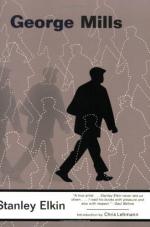|
This section contains 337 words (approx. 2 pages at 300 words per page) |

|
The most interesting question about any Elkin novel concerns tone and attitude. His narratives are rich in symbol and anecdote, but the attitude he wants his readers to take toward characters and situations can be ambiguous. For George Mills, an obvious issue concerns reciprocity among the three major narratives. Are they successfully integrated? What resonances exist among these texts?
1. In Part One, Greatest Grandfather has an epiphanic moment when he sees a beautiful tapestry and determines that this represents his class's destiny.
What does Elkin mean by the metaphor "tapestry condition"? Is this a valid description of class hierarchy?
2. The forty-third Mills has hilarious adventures in a Sultan's harem. How are these integrated with the themes of the novel? Is the story too far-fetched to be part of a generally realistic narrative?
3. The contemporary Mills associated in his youth with a colony of spiritualists in Florida...
|
This section contains 337 words (approx. 2 pages at 300 words per page) |

|




